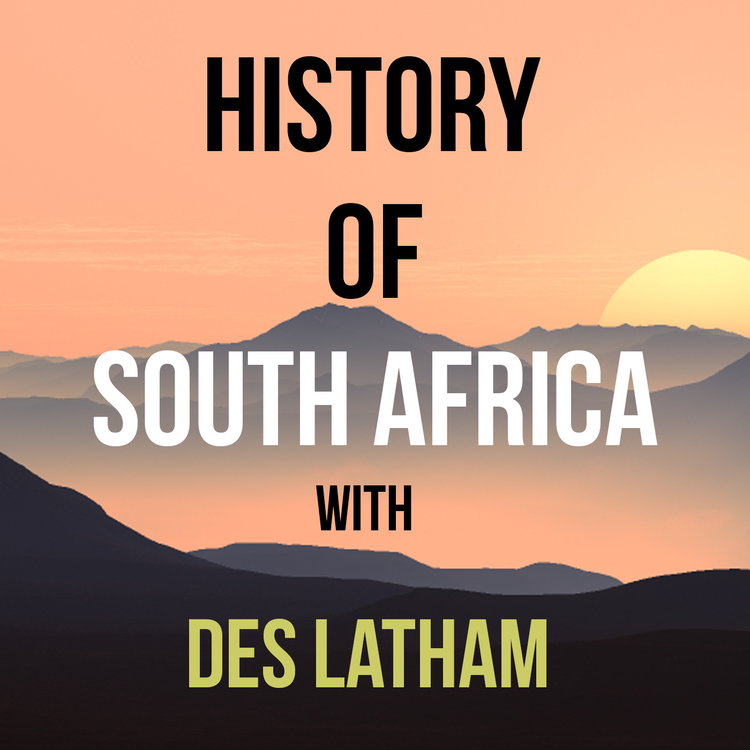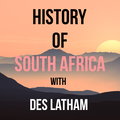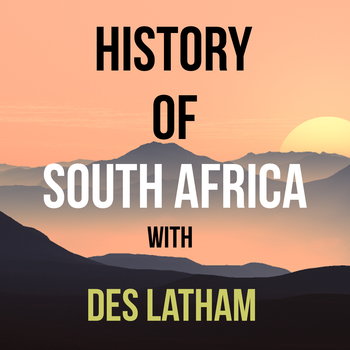
Episode 159 - Boer women as handmaidens to history and the swirling social dust storms in TransOrangia circa 1843
Loading player...
This is episode 159.
If we take out a map of south Africa and reconsider the regions, it will become quite apparent that the main demarcation is geographical, geological, the main points of reference are the rivers and the mountains, the desert and semi-desert, the good soils and the bad.
Take a look at a map of the region to the south west of the Drakensberg, for its this area way down to the Orange River and extending towards the Kalahari and the Richtersveld that we’re going to focus on in this episode.
There is a direct correlation between the British seizing Natal from the Boers, and the effect on the Basotho, the Griqua, the baTlokwa amongst others. The Voortrekkers who refused to take an oath of allegiance to the British Queen Victoria trekked back up over the Drakensberg. And it was the vast majority.
Some of these would head north, some south west.
Most headed back south were not going to where they began, the Cape Colony, but to try and negotiate or seize land between the Cape and Natal.
This was not empty land and I’m going to explain what happened after 1843, after the English flag began to flutter from the Fort in Durban.
Slow as wagon travel was, the speed with which the Boers had spread themselves across so much of southern Africa in such a short time had taken everyone by surprise - it had taken six years.
The Cape Governors were totally unprepared for this migration. Their narrative had been that these Europeans would find inland Africa far too unforgiving and then return to the Cape where they’d settle down and pay their taxes. When they left in the late 1830s, Cape Governor Sir Benjamin D’urban was anxious, his successor Sir George Napier was even more so.
The Boers trundled into the interior and directly into the seething hinterland, shattered as it had been by Mzilikazi, Shaka, the BaTlokwa, and of course, the Griqua and Bastard raiders who travelled like Boers, on horses, with hats and guns.
It’s hard for many to fathom these days in the 21st Century, post-apartheid, in a land so riven by what seems to be race-based antagonisms, that back in 1843 by far the most caustic, acrimonious, begrudging and irreconcilable emotions were those felt by the Boers against the British. Their anti-British sentiments were fixed although on an individual basis, the two people seemed to get along. When deserting British soldiers appeared in their midst, Boer mothers and fathers were not averse to their daughters marrying these men.
The Boers began to concentrate on the high Veld and across the orange, but for many, the crucial state was Natal. They had gained bloody victories over the amaZulu here, Blood River was their covenant, a lasting affirmation of God’s great plan for the Boers, part of their Exodus narrative, his support of them in smiting the Philistines, the heathens, their dark enemies. Jan Mocke was one of these men on the extreme edge of this sentiment.
What had emerged to startle the British, was the power of the voices of Boer Women. They had seen the resistance of their husbands weakening, they’d heard the disparate arguments, the egos where their men had come to blows after a couple of brandies, and told British offiicals to their faces that they’d walk out of Natal Barefoot across the Drakensberg if necessary to die in freedom.
As Noel Mostert points out, the Boer women, like amaXhosa women who’d also been busy stiffening their men’s spines, were force that could never be ignored. They were active, demanding and the handmaidens to their history.
If we take out a map of south Africa and reconsider the regions, it will become quite apparent that the main demarcation is geographical, geological, the main points of reference are the rivers and the mountains, the desert and semi-desert, the good soils and the bad.
Take a look at a map of the region to the south west of the Drakensberg, for its this area way down to the Orange River and extending towards the Kalahari and the Richtersveld that we’re going to focus on in this episode.
There is a direct correlation between the British seizing Natal from the Boers, and the effect on the Basotho, the Griqua, the baTlokwa amongst others. The Voortrekkers who refused to take an oath of allegiance to the British Queen Victoria trekked back up over the Drakensberg. And it was the vast majority.
Some of these would head north, some south west.
Most headed back south were not going to where they began, the Cape Colony, but to try and negotiate or seize land between the Cape and Natal.
This was not empty land and I’m going to explain what happened after 1843, after the English flag began to flutter from the Fort in Durban.
Slow as wagon travel was, the speed with which the Boers had spread themselves across so much of southern Africa in such a short time had taken everyone by surprise - it had taken six years.
The Cape Governors were totally unprepared for this migration. Their narrative had been that these Europeans would find inland Africa far too unforgiving and then return to the Cape where they’d settle down and pay their taxes. When they left in the late 1830s, Cape Governor Sir Benjamin D’urban was anxious, his successor Sir George Napier was even more so.
The Boers trundled into the interior and directly into the seething hinterland, shattered as it had been by Mzilikazi, Shaka, the BaTlokwa, and of course, the Griqua and Bastard raiders who travelled like Boers, on horses, with hats and guns.
It’s hard for many to fathom these days in the 21st Century, post-apartheid, in a land so riven by what seems to be race-based antagonisms, that back in 1843 by far the most caustic, acrimonious, begrudging and irreconcilable emotions were those felt by the Boers against the British. Their anti-British sentiments were fixed although on an individual basis, the two people seemed to get along. When deserting British soldiers appeared in their midst, Boer mothers and fathers were not averse to their daughters marrying these men.
The Boers began to concentrate on the high Veld and across the orange, but for many, the crucial state was Natal. They had gained bloody victories over the amaZulu here, Blood River was their covenant, a lasting affirmation of God’s great plan for the Boers, part of their Exodus narrative, his support of them in smiting the Philistines, the heathens, their dark enemies. Jan Mocke was one of these men on the extreme edge of this sentiment.
What had emerged to startle the British, was the power of the voices of Boer Women. They had seen the resistance of their husbands weakening, they’d heard the disparate arguments, the egos where their men had come to blows after a couple of brandies, and told British offiicals to their faces that they’d walk out of Natal Barefoot across the Drakensberg if necessary to die in freedom.
As Noel Mostert points out, the Boer women, like amaXhosa women who’d also been busy stiffening their men’s spines, were force that could never be ignored. They were active, demanding and the handmaidens to their history.

